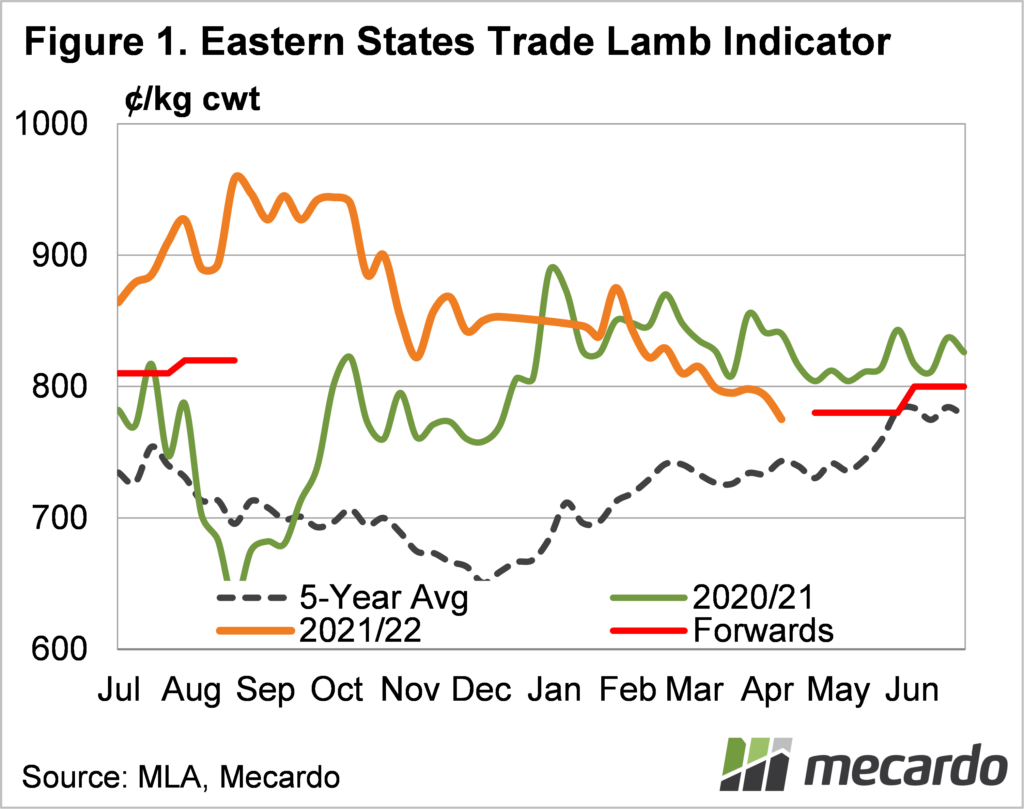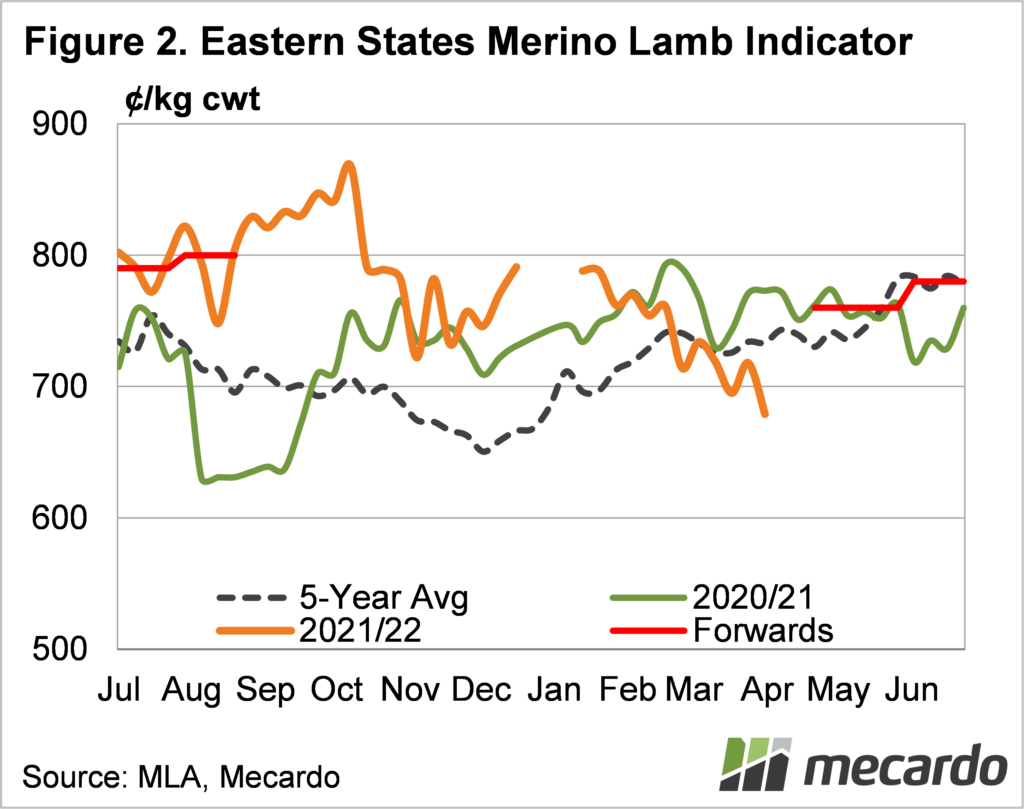The sliding lamb market as we head toward Easter has raised more than a little concern for lamb producers. About the only end of the market which hasn’t eased is the restocker category. This is likely due to some forward contracts which have been on offer for the winter. Here we look at how they compare to last year and current values.
The period between the last of the old season lambs coming to market, and the start of the new season lamb supply is generally the tightest time for lamb supplies for the year. The supply dearth hits most years, and can start any time in June or July, and ends sometime from late August all the way through to October.
The five-year average shown in figure 1 has lamb prices kicking higher early in June, and easing from late July onwards. Last year the peak came later and lasted longer. In 2017 there wasn’t really a peak at all.
The forward prices for NSW and South Australian delivery for June, July and August point towards steady to slightly higher prices through the winter. The red line on figure 1 shows where the prices for cross bred lambs were pitched in NSW.
The forward contracts are pitched at 800¢ for June, 810¢ for July and 820¢/kg cwt for August, similar to June 2021, but way below last year’s July and August prices. During winter 2021 the Eastern States Trade Lamb Indicator (ESTLI) reached record highs of 950¢/kg cwt, so the forward contracts are roughly 14-15% lower than last year.
For a 25kg cwt lamb, the difference is $35 per head, which is a significant decline if budgets were done on last year’s levels.
Forward prices for Merino lambs are pitched 20¢ lower than the crossbred prices, but they present better value. Figure 2 shows forward prices for Merino’s are similar to last year, but prices did hit higher peaks in September.
What does it mean?
If we look at current restocker prices, around 400-450¢/kg lwt, or $140 for a 35kg lamb, there is still profit in growing out lambs. At 810¢/kg cwt, a 24kg cwt lamb will make $194/head plus skin, so for lambs finished on grass there is plenty of margin.
Taking some forward prices would protect downside of the like seen after the big La Nina year of 2011 when prices continued to slide during winter. There is upside in the market of course, with the incentive to hold females and Merino wethers the key to pulling up supply in the winter.
Have any questions or comments?
Key Points
- Lamb prices usually rally during the winter, with forward contracts on offer in case of tight supply
- Merino contracts look more attractive than crossbred, compared to last year.
- Forward contracts offer historically good values, and there is still risk to the downside.
Click on figure to expand
Click on figure to expand
Data sources: MLA Mecardo














